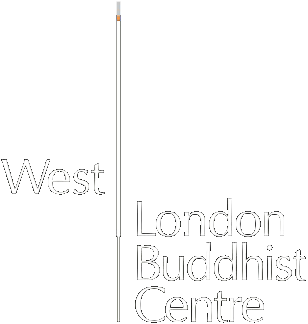A noteworthy meditation class
Posting the notes from Vajradaka’s recent meditation workshop sessions at Sangha Night, Alex Crowe shares some of the reasons he particularly appreciates Vajradaka’s approach.
You can tell when a meditation class has gone well – from the atmosphere in the shrine room, or from the questions people ask and the insights they share during the class, or perhaps just from how they are as they make their way out of the Centre at the end of the evening.

Vajradaka
All those tell tale signs were there at Vajradaka’s meditation workshop sessions at Sangha Night over the last three weeks – perhaps not surprisingly, given his reputation as one of Triratna’s most experienced and influential meditation teachers.
So we’re fortunate that he’s kindly provided some notes that summarise the main points from the classes. They’ll be of interest for people who were there, but also may well be useful for people who weren’t.
The notes give you a taste of his particular approach to meditation, and I wanted to take the opportunity of posting them here to rejoice a little in his merits by sharing something of what I particularly appreciate about his teaching. I had the privilege of living with him in a community for some five years, during which time he was always generous and enthusiastic in sharing his experience and knowledge of the meditative process.
First, I love the way he teaches about the basic principles of how to work with the mind – the principles that underlie any of the particular practices and techniques one might learn, from mindfulness of body and breath, to loving kindness-based practices, visualisation, reflection or just sitting. I’ve found this approach has helped me to be more confident in working with the particular practices in creative ways. I’ve found it’s generally possible to link back his ways of explaining things to traditional, canonical sources and concepts; but his way of using fresh, everyday, simple language helps bring them to life in my own experience.
Secondly, I appreciate his emphasis on working in an embodied way. This is something that, in my view, any good meditation teacher will do. But his particular way of encouraging engagement with the ‘felt sense’ in the body, even when simultaneously working with thought, I’ve always found very valuable.
Thirdly, I find the way he weaves imagination and metaphor into that embodied way of working very helpful – not least because it speaks directly to some of my own interests in creative movement and meditation. Again, many teachers use imagery; but he has a particular way of using mental imagery in relationship to physical sensation that I’ve always found powerful – the ‘metaphoric question’ technique he outlines in his class notes is a good example of this.
Alex Crowe

